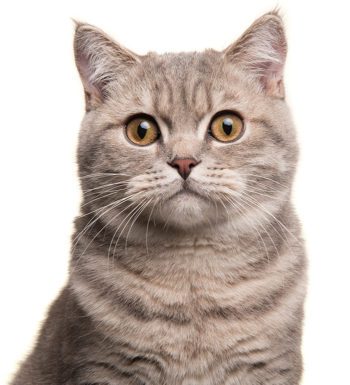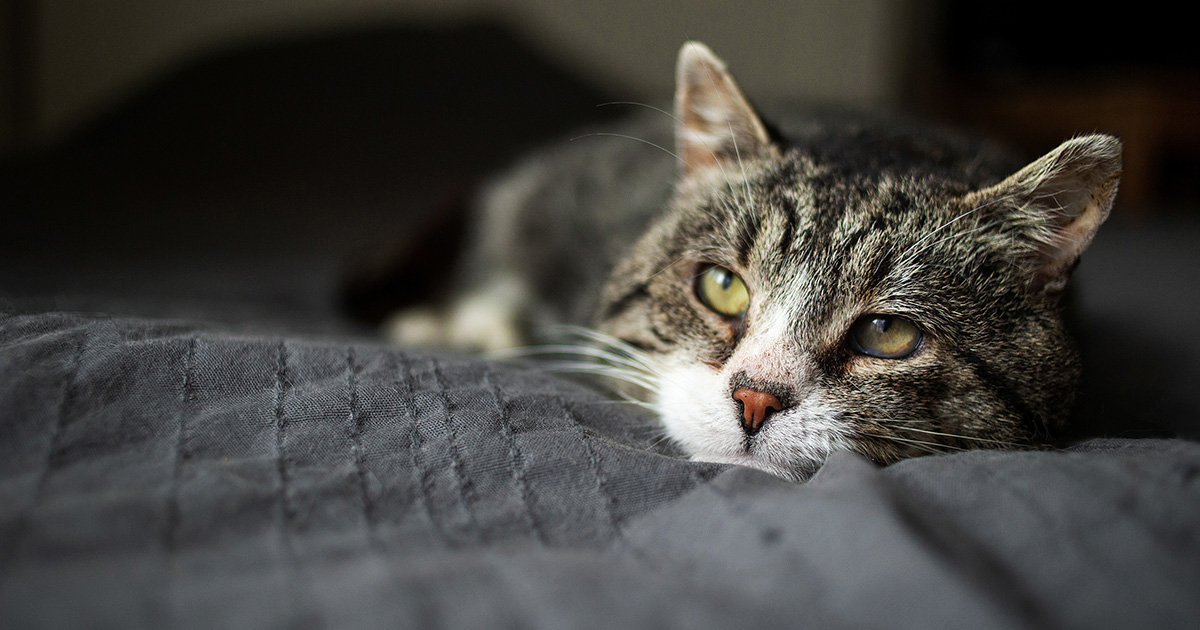In human medicine, the term “geriatric” is now being reserved for when age-related diseases are diagnosed and established (often with additional comorbidities), rather than as a term associated with a specific age range.
Feline age categories have traditionally called cats “senior” from 11 years of age and “geriatric” from 15 years, but in the absence of age-related diseases, this age range could be called “super-senior” and the term geriatric used for cats with age-related morbidities, instead.
Cats aged 7 to 10 years are considered mature. However, if we consider the literature on age-related disease (summarised in Table 1), these diseases do start to occur in cats in the mature age range, and the pathophysiological changes that lead to the development of these diseases will be occurring for some time prior to clinical disease becoming apparent.
Additionally, in a study of 206 cats aged 7 to 10 years of age, 45% were overweight or obese, 29% had a heart murmur, 5% had elevated systolic blood pressure, 54% had dental disease, 58% had abnormalities on orthopaedic examination, 10% were azotaemia, and 3% were hyperthyroid. Only 12% were “healthy” of 176 out of 206 that were completely examined1.
| Table 1. Common diseases seen in the ageing cat | |
|---|---|
| Disease | Effect of age on prevalence of disease |
| Chronic kidney disease (CKD) | Increases with age in cats older than 8 to 10 years2 Prevalence of 37.4% in cats aged 0 to 4.9 years, 40.9% in cats aged 5 to 9.9 years, 42.1% in cats aged 10 to 14.9 years and 80.9% in cats 15 to 20 years3 Between 18% to 30.5% of a geriatric cohort (nine years and older) develop azotaemia within a year4,5 |
| Hyperthyroidism | UK prevalence of 2.5% raising to 8.7% in cats 10 years and older6 6% in cats older than 10 years also in the UK7 3.89% in cats older than 10 in Hong Kong8 8.9% in cats older than 9 years in Japan9 |
| Hypertension | Prevalence of hypertension is higher in cats aged older than 10 years10,11 Secondary hypertension is commonly associated with CKD and hyperthyroidism12,13 Cats show a significant increase in systolic blood pressure with age over a 12-year period14 |
| Diabetes mellitus | Six years and older was determined as a risk factor for disease15 |
| Osteoarthritis (OA)/degenerative joint disease | Overall prevalence of 92% with a least one joint affected by OA, with each year of additional age being associated with a 13.6% increase in arthritis score (number of joints affected and severity of lesions)16 Overall prevalence of 61% of at least one joint with OA and 48% with more in one joint in cats 6 years and older17 33.9% prevalence in a group of cats with average age of 6.5 years18 90% prevalence in a group of cats with average age of 15.2 years19 |
| Heart murmurs and hypertrophic cardiomyopathy (HCM) | Prevalence of heart murmurs: 24.1% in cats aged 6 to 12 months, 37.5% in cats aged 1 to 3 years, 44.1% in cats aged 3 to 9 years and 59.8% in cats aged older than 9 years Prevalence of HCM: 14.7% across a population of 780 cats, rising 29.4% in cats older than 9 years Presence of a heart murmur and increasing age significant risk factors for HCM20 |
| Weight and body condition | Cachexia (loss of lean body mass) is associated with a number of the age-related diseases in cats21,22. Sarcopenia (loss of lean body mass in the absence of disease) is associated with ageing in cats23 Body condition tends towards obesity between 7 to 13 years of age24 |
| Dental disease | A higher prevalence of tartar and periodontal disease is reported in cats older than 3 years of age than cats younger than 3 years of age, with an overall prevalence of 68%25 |
| Cancer | 12.3% of cats older than 5 years of age die due to neoplasia26 The frequency of tumour development increases with age in all types and locations27 |
What are the common conditions?
Table 1 summarises the common diseases seen in ageing cats, their prevalence and the ages they are commonly diagnosed.
Key points for working with and advising caregivers
Getting the most out of your annual appointments
The goal is to encourage cat caregivers to bring their cat into the clinic before the disease becomes clinically apparent, giving us the opportunity to diagnose and manage age-related diseases before they start to have a significant impact on the cat’s welfare.
One way of doing this is by raising awareness of the clinical signs of age-related disease at annual appointments and to provide education on what is involved in screening for these diseases, and when it needs to be considered.
Being consistent with your advice across the team
It should be agreed as a clinical team what advice you are giving, including the frequency of appointments, the age ranges under consideration and what diagnostic tests are advised, in addition to when.
Individualise to the animal
Each cat will age differently, so it is useful to have broad categories for advice, but individual caregiver and cat factors need to be taken into consideration when tailoring advice and care plans.
This includes how comfortable the cat and owner are attending the veterinary clinic, what the financial resources are and, most importantly, what the existing health status of the cat is, what medications are they on and what morbidities and comorbidities are present.
Be upfront about costs

The individual cat’s disease status should always be taken into account, as this is often the main factor to determine the frequency of visits and the type of diagnostic tests advised, which are the main factors impacting the cost.
It is important to realise that we really do not know how frequently healthy cats should be visiting the clinic. Guidelines produced are based on the best evidence available, and that evidence is poor.
Geriatric or cats with a known age-related disease should probably be visiting the vet every three months. With a healthy geriatric (super-seniors) then a longer visit every six months and a shorter appointment every three months could be considered.
For senior cats, every six months is likely to be the most appropriate; for mature cats, an annual vet visit with potentially a short six-month check should be suitable.
What should we be including?
A thorough clinical examination should be included with every appointment.
Key points for clinical exam
- Weigh the cat at every appointment and record the body condition score.
- Record the muscle condition score. This may be using a formal muscle condition score system or just a descriptive note of what you are seeing.
- Always look in the cat’s mouth; dental disease in cats is very common.
- Palpate for a goitre.
- Listen to the heart on two to three different occasions during the exam, as the presence of a murmur in cats will vary with the heart rate. Listen when the cat first arrives and then later when it is settled, and again if it gets upset during the exam.
- Have a good look at the coat and note any areas of over-grooming or under-grooming. During your history and examination, try to observe the cats walking around the room, too, and perform an orthopaedic examination if indicated.
Diagnostics
Blood pressure
Ideally, blood pressure should be part of an annual exam from seven years of age and at every appointment for cats that are hyperthyroid or have chronic kidney disease (CKD).
Blood pressure will increase with age, so starting from seven will get cats used to the procedure and hopefully reduce white coat effect.
Cats with a reading of more than 140mmHg (if they have CKD) or more than 160mmHg should have their retinas examined for signs of hypertensive retinopathy.
Urine sample
Ideally, collect a urine sample annually in cats older than seven years and more frequently in cats older than 10 years.
Test urine specific gravity, perform a dipstick for blood and bilirubin, and a sediment exam for crystals and inflammatory cells.
Bloods
Blood sampling could be included as part of a standard senior health check package on an annual or bi-annual basis; alternatively, you may choose to do bloods when the indication exists to do so.
Table 2 summarises some of the common clinical indications for running routine biochemistry and haematology (minimum database).
| Table 2. Common clinical indications for running routine biochemistry and haematology | |
|---|---|
| Clinical indication | Which routine blood samples should be run |
| Owner-observed polyuria/polydipsia | Minimum database with or without thyroxine (T4) |
| Reduction in weight/body score condition/ muscle condition | Minimum database with or without T4 |
| Dental disease | Minimum database pre-general anaesthetic |
| Hypertension | Minimum database with or without T4 |
| New heart murmur/increasing grade of murmurv | T4 and PCV |
| Palpation of a goitre | T4 |
| Abnormal renal palpation | Minimum database |
| Urine specific gravity under 1.035 without dietary explanation | Minimum database with or without T4 |
Summary
Develop a general structure for your clinic, but always be prepared to modify it for the individual. Aim to be consistent across the whole team, so that the caregiver is not receiving mixed messages about the care of their cat.
Regular examinations in practice, monitoring weight and assessing the cat for common conditions that have a large impact on individual welfare, such as dental disease and musculoskeletal disease, can be hugely beneficial.
The caregiver is more likely to undertake further diagnostics if they trust the veterinary team and can understand the individual value for their cat.

Leave a Reply